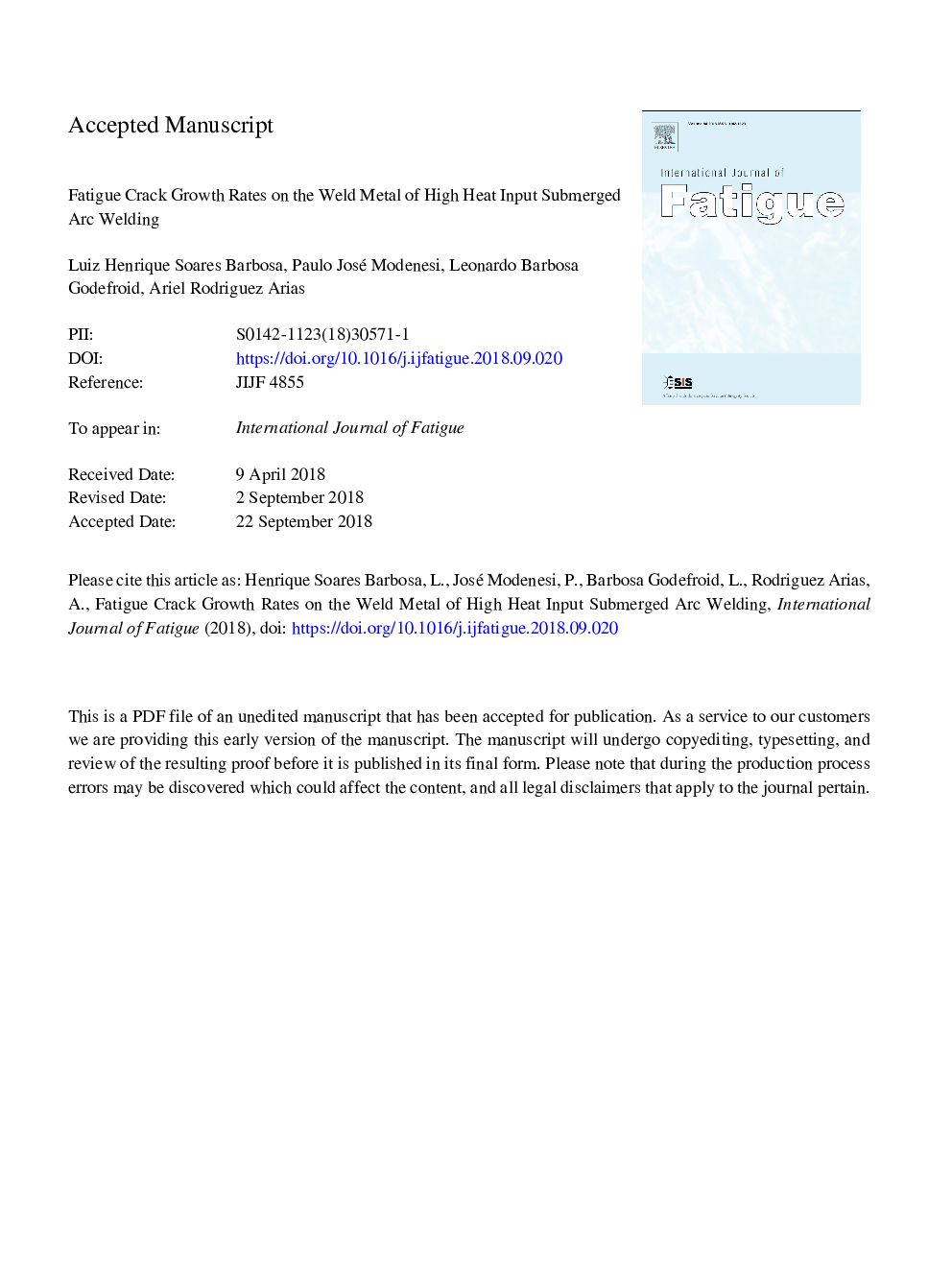| Article ID | Journal | Published Year | Pages | File Type |
|---|---|---|---|---|
| 11016299 | International Journal of Fatigue | 2019 | 23 Pages |
Abstract
Submerged arc welding (SAW) with high heat input and more than one wire has been used to weld thick plates in order to reduce the number of passes and consequent increase of productivity in the shipbuilding and oil industries. Additional characteristics of SAW such as high penetration and relative ease to produce welds with good finishing and without discontinuities contribute to this process has being widely applied. However, the use of very high heat inputs leads to the formation of a large melting pool and large amount of liquid metal, and it submits the weld region to long-term thermal cycles with low cooling rates. This scenario contributes to the formation of thick solidification structures and, at the end of the cooling, results in a microstructure consisting mainly of grain boundary ferrite with low mechanical strength and large grain size. This research evaluated fatigue cracks growth rates in welding metals with heat input higher than 10â¯kJ/mm made of the new SAW technique, called Integrated Cold Electrode⢠with addition of non-energized (cold) wire. Single pass welds were made on 25â¯mm thick EH36 steel varying the chemical composition of the wire (filler metal). Microstructure, mechanical properties and da/dNâ¯Ãâ¯ÎK graphics were made with the propagation of the crack in the longitudinal direction of the weld. For all tested conditions, propagation rates were similar to Paris regime base metals. However, the welds presented a crack propagation threshold higher than base metal, and fatigue threshold of higher heat input welds was increased using a molybdenum-containing filler metal. It was attributed to the presence of a higher amount of acicular ferrite in this particular welding microstructure.
Keywords
Related Topics
Physical Sciences and Engineering
Engineering
Mechanical Engineering
Authors
Luiz Henrique Soares Barbosa, Paulo José Modenesi, Leonardo Barbosa Godefroid, Ariel Rodriguez Arias,
